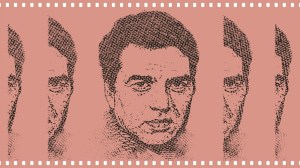Explained: Gen Franco, and the exhumation of a brutal phase in Spain’s history
The memory of Franco’s 36-year-long regime between 1939 and 1975, and the Spanish Civil War (1936-39) which brought him to power, continue to remain emotive topics in Spain today.
 A visitor takes a snapshot at the Valley of the Fallen mausoleum near El Escorial, outskirts of Madrid, Spain, Tuesday, Sept. 24, 2019. The Spanish Supreme Court has ruled that the caretaker Socialist government can exhume the remains of former dictator Gen. Francisco Franco. (AP Photo)
A visitor takes a snapshot at the Valley of the Fallen mausoleum near El Escorial, outskirts of Madrid, Spain, Tuesday, Sept. 24, 2019. The Spanish Supreme Court has ruled that the caretaker Socialist government can exhume the remains of former dictator Gen. Francisco Franco. (AP Photo)
On Tuesday, the Supreme Court of Spain ruled in favour of the government’s plan to exhume the remains of former dictator Francisco Franco, after whose death in 1975 Spain transitioned from an authoritarian state to a constitutional monarchy.
The memory of Franco’s 36-year-long regime between 1939 and 1975, and the Spanish Civil War (1936-39) which brought him to power, continue to remain emotive topics in Spain today.
The Spanish newspaper El País in its editorial has called the unfolding events “the end of an incomprehensible anomaly in a democracy, in which a dictator was allowed to remain for more than 40 years in a monument that he himself built to glorify his regime.”
The Spanish Civil War
Known in Spanish as the ‘Guerra Civil’, the conflict pitted Spain’s democratically elected Republican government against forces led by General Francisco Franco, who seized power in 1939 after three years of brutal warfare that left over 5 lakh dead.
Franco was supported by Nazi Germany and Fascist Italy, as well as by conservative elements within Spain. The Republican government was helped by the Soviet Union and by volunteer forces from democratic countries in Europe and the US.
The major European democracies of the time, Britain and France, shied from helping Spain’s Republican government officially, despite Germany and Italy’s backing of Franco on a massive scale. The Civil War is thus regarded by many as one of the key harbingers of World War II.
Franco’s rule
After becoming Spain’s ruler in 1939, Franco maintained the country’s neutrality in World War II, but remained amiable with the Axis powers that had helped him come to power.
Franco’s initial years in office were especially repressive. Thousands of political opponents were sent to prison by military tribunals, and executions by firing squads took place. The public use of regional languages such as Catalan and Basque was prohibited, and Catholic Christianity was the declared state religion. Trade unions were banned. Divorce and abortion were also outlawed.
Towards the end of his rule, Franco relaxed his grip on power, and his anti-communist stance brought him closer to the US and its allies during the Cold War. The last two decades of his rule saw an overhaul of Spain’s economy.
In 1969, Franco declared the exiled royal Juan Carlos I as his official successor upon his death. The latter dismantled Spain’s authoritarian structure after taking over in 1975, and restored Spain to a constitutional monarchy with multiple political parties.
Don’t miss from Explained: Why RBI has put restrictions on a cooperative bank, what happens now
The exhumation of Franco’s remains
After his death in 1975, Franco was interred at the Valle de los Caídos, a state mausoleum which was built during his rule using forced labour and where 33,000 victims of the Spanish Civil War are buried.
In the years since, as democracy grew stronger in Spain, calls to relocate the dictator’s remains to a less honorific place arose. In 2018, the Spanish parliament agreed to exhume Franco’s remains. The government’s plans, however, were impeded by protests from the former dictator’s family as well as by church authorities. The Supreme Court’s decision on Tuesday has now cleared most obstacles in the government’s path, and the Catholic Church has also agreed to abide by the ruling.
The Spanish Socialist Workers’ Party (PSOE), which is running Spain’s minority government, plans to relocate Franco’s remains to a less high profile location before the next general election in November this year. While analysts believe that the move could improve the PSOE’s fortunes in the elections, it could also invigorate Spain’s far-right, for whom Franco’s mausoleum has become a rallying point in recent years. In the last election in April this year, the ultranationalist Vox party obtained 10% of the popular vote, a first for the ultra-right since Franco’s death.
- 01
- 02
- 03
- 04
- 05






































